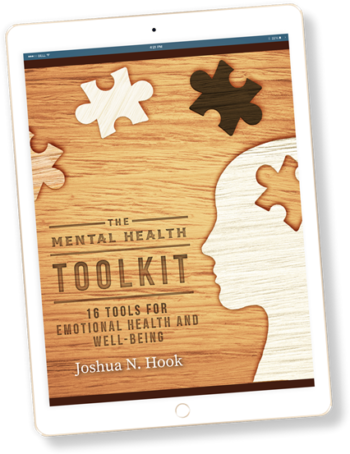How to Invest Your Money
August 25, 2019
Categories: Money
When it comes to investing your money, it seems like there are an unlimited number of options. You can invest in the stock market, bonds, real estate, heck, a friend of mine from college worked at a startup that allows you to invest in cattle. Even within a certain category of investments, there are options. For example, if you want to invest in the stock market, you can invest in individual stocks, index funds, mutual funds, etc. The options can quickly become overwhelming. Even worse, when faced with multiple confusing options, many people do nothing, which risks the future security of themselves and their families.
So, how should we invest our hard-earned money? How can you cut through the confusing array of options and select an investment strategy that works for you and your family, without taking up a lot of your time and energy? In this blog post, I cover some of the basics of investing. (Disclaimer: I’m not a professional financial advisor–this content consists of my personal opinions and suggestions.)
Pay Yourself First
Saving for the future is hard. I get it. You go along in life and the expenses seem to pile up. Then you get married and have kids, and things get more expensive. Even going to the grocery store can take a big chunk out of your budget. It can seem impossible to carve out a certain percentage of your income to invest in the future. I think one key shift is to start thinking of saving and investing as paying yourself first. You’re not depriving yourself of a certain amount of money—you will spend this money on yourself in the future.
How much is the right amount to invest? This depends on your situation, and how much money you will need in retirement. You can use a retirement calculator online that can give you a pretty good estimate of how much you need to invest each year so that your money won’t run out before you die. For the average person, I would recommend investing a minimum of 10% of your gross pay. 15-20% is probably safer if you can manage it.
Automate Your Investing
We all have a limited amount of effort and resources to expend. That’s just the way it is. If we have to think about investing and make the decision to do it each month, it is unlikely to happen. However, if we automate our investments, it happens whether we remember to do it or not. We don’t have to think about it. The money is taken out of our paycheck before we even see it.
The Magic of Compounding
The basic idea of investing is that the money you invest makes more money each year, just sitting there. The stock market, for example, has historically offered an average annual return of about 8%. So, if you invest $1000, you would, on average, have about $1080 12 months later (a gain of $80)! That’s great! The year after that, however, you will most likely gain MORE than $80, even if you didn’t invest a dime more. That’s because you would expect about 8% on your new total (i.e., $1080), which would give you a gain of about $86 the next year. The year after that, you would gain $93. And so on.
Because of the magic of compounding, it’s important to begin investing early. Don’t wait to start investing until your 30s or 40s. Start investing aggressively in your 20s—as soon as you begin working. Your early investments will pay huge dividends later on in your life.
Retirement Accounts
For the average person, most of their investment decisions will involve their retirement accounts. There are two main reasons for this. First, retirement accounts offer tax benefits that are hard to beat. If you invest in a 401k, for example, you invest your money pre-tax. This allows you to invest more money each year that can grow and compound over time, which is a huge win. Remember our previous example, of investing $1000 and ending the year with $1080? If you had to pay taxes first (assuming a 25% tax rate), you would only be investing $750. To end the year at $1080, you would have to have an incredible 44% rate of return on your money. That just isn’t going to happen.
There’s another type of retirement account that offers a different sort of tax benefit, called a Roth IRA (IRA just stands for individual retirement account). With a Roth IRA, you pay taxes on your money at first, but you don’t have to pay any taxes when you withdraw your money at retirement. (If you just invested in a normal brokerage account, you would have to pay a 15% tax on any capital gains you received.) Again, this tax benefit is hard to beat. If you invested $750 in a Roth IRA, at the end of the year, you would expect to have about $810 (a gain of $60). But if you invested in a normal brokerage account, you would have to pay a 15% capital gains tax on that $60, leaving you with only $801 (a gain of $51). It doesn’t seem like much, but over time these differences add up.
Second, many employers do what is called a match, meaning they will match your 401k contribution up to a certain percentage. For example, my employer matches my 401k contribution up to 6.5%. That means if I contribute 6.5%, my employer will match that, leaving me with 13%! This is free money that every worker should take advantage of.
Bottom line: Your primary focus when investing will be your tax-friendly retirement accounts.
401k or Roth IRA?
There are unique benefits to the 401k and Roth IRA. The 401k, as we discussed earlier, allows you to put your money in pre-tax, which is a huge advantage over time. Also, if your employer participates in a 401k match, this is free money that you absolutely should take advantage of.
The Roth IRA offers a different kind of benefit. You have to pay taxes now, but then you don’t have to pay taxes, which may give you more flexibility down the road. The Roth IRA might also be a good option if you expect to be in a higher tax bracket later on in your life. If this is the case, you might as well pay Uncle Sam now, when your income (and tax percentage) is lower.
Most books I have read offer the following guidelines for prioritizing the 401k vs. the Roth IRA:
First Priority: If your employer offers a 401k match, contribute enough to receive the maximum employer match. Remember, this is free money. You don’t want to leave this money on the table.
Second Priority: If you still have money available to invest, open a Roth IRA account and contribute up to the yearly maximum. In 2019, the maximum yearly contribution was $6,000 per year.
Third Priority: If you still have money available to invest, contribute to your 401k up to the yearly maximum. In 2019, the maximum yearly 401k contribution was $19,000 per year. (Note: The money contributed by your employer does NOT count toward this maximum contribution.)
What to Invest In?
When you begin to contribute to a 401k or Roth IRA, you have to choose which funds to invest in. This can be incredibly confusing, but it doesn’t have to be. Brokers might try to sell you various mutual funds, promising huge returns. (A mutual fund is a collection of stocks, picked by a financial expert.) It’s wise to be cautious, however, A recent research study found that 96% of mutual fund managers didn’t beat the market—meaning that their stock picks didn’t perform better than an overall index fund. Index funds track a large number of stocks. The S&P 500, for example, tracks the 500 largest companies in the United States.
So, in general, it seems wiser to invest in index funds rather than mutual funds or individual stocks. (Another benefit of index funds is that the managing fees are generally lower than mutual funds. High fees can kill your rate of return.) Most mutual funds, which contain stocks picked by experts, don’t beat the market. If professionals can’t beat the market, it’s unlikely that you will beat the market by picking individual stocks. You might get lucky sometimes, but it’s like throwing a dart. Over the long-term, the market usually wins.
But what index funds are best to invest in? Should you put 100% of your portfolio in an index fund that tracks the S&P 500? Probably not. It’s good to diversify your portfolio. Asset allocation involves placing your money in different categories of investment funds. Here is a sample asset allocation from David Swensen, who grew Yale’s portfolio from 1 billion to more than 23 billion by achieving an average rate of return of 13.9%:
Domestic Stock: 20%
International Stock: 20%
Emerging Stock Markets: 10%
REITs (real estate investment trusts): 20%
Long-term US Treasure bonds: 15%
TIPS (treasury inflated-protected securities): 15%
If your head is spinning, don’t worry. There’s a simple solution that for many of us is “good enough”: target-date funds.
Target-date funds are designed with a particular retirement date in mind. (For example, I have some of my money invested in a target 2050 fund, which is around the year I will probably retire.) Target-date funds attempt to do asset allocation for you, and adjust the numbers as you near retirement. Specifically, when retirement is far away, the asset allocation is more heavily weighted toward growth-oriented (but riskier) investments, such as stocks. However, when retirement is closer, the asset allocation is more heavily weighted toward less growth-oriented (but more stable) investments, such as bonds. This strategy might not be quite as good as understanding and utilizing the asset allocation strategies described above, but it’s a lot simpler and easier. (Just make sure you don’t choose a target-date fund with high fees!)
What Else?
If you are maxing out your contributions to your retirement funds every year, well done! You’re probably in good shape for retirement, and well on your way to financial freedom. If you still have money left over to invest, you could open a brokerage account and invest more in index funds. You just won’t receive the tax benefit of a retirement account.
Discussion
Where are you at with investing? How are you doing with the basics? What questions do you still have?

Related Thoughts
No Comments
Leave A Comment

Subscribe To My Newsletter
Join my mailing list to receive the latest blog posts.
Receive my e-book “The Mental Health Toolkit” for free when you subscribe.



Well done good sir! Very simple and easy to understand. My only constructive criticism would be you may want to put a disclaimer about how you’re not a professional financial advisor and that your content are just personal opinions and suggestions. This prevents legal exposure for you professionally.
Thanks Johnny, that is a good idea. I will add that.